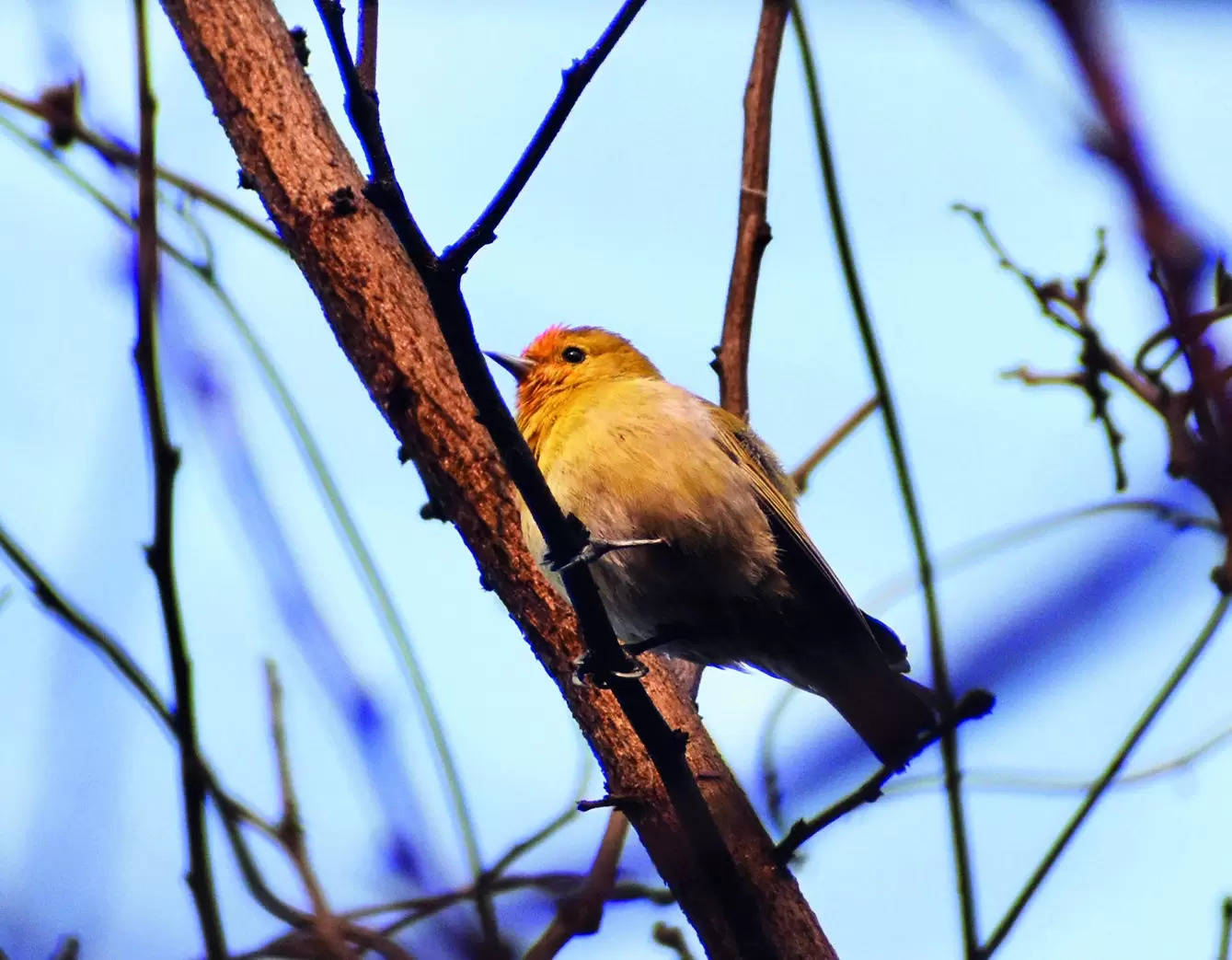New Delhi: Birders have spotted the trail of species flying back home suggesting reverse migration as the season changes from winter to summer.
According to the experts, generally reverse migration begins towards the end of Feb or by first week of March, but this year the pattern suggests otherwise.
The birders’ claims followed the spotting of a species called fire capped tit, a songbird that prefers forests over wetlands, breeds in the Himalayas and migrates down to southern India like the Ghats and Kerala during winter.
The bird was spotted in the Aravalli region, along with similar species like the black redstart, suggesting arrival of summer.
“The fire capped tit is a Himalayan bird which flies down south towards Western Ghats and Kerala around Sept, and is back around Feb-end and March. On Sunday, birder Udiyaman spotted one at the Aravalli Biodiversity Park, which suggests a prelude to reverse migration which is still 10-15 days early. For this year, the winter has also almost ended,” birder Major General Arvind Yadav said.
Shukla said there could be two reasons for the early reverse migration. “The winters were not very harsh in central India. So, the bird could have started moving early. The other hypothesis could be that though this species is generally found in flocks, it is possible that the one I spotted was an early bird and the major population is still down south or in central India and will start to arrive by the end of Feb… We have spotted this bird multiple times in Bhondsi, but this is the first time it has been spotted here in Aravalli Biodiversity Park. These birds breed in the Himalayas during summer and have a melodious song, which I recorded,” he said.
He pointed out that the black redstart that breeds in the Himalayas, Central Asia and Europe was spotted in large numbers. “Their presence suggests that those which had gone further south must have come back,” Shukla said.
The region receive over 80 species of birds from Oct. About 40 species make a pit stop in the region.
According to the experts, generally reverse migration begins towards the end of Feb or by first week of March, but this year the pattern suggests otherwise.
The birders’ claims followed the spotting of a species called fire capped tit, a songbird that prefers forests over wetlands, breeds in the Himalayas and migrates down to southern India like the Ghats and Kerala during winter.
The bird was spotted in the Aravalli region, along with similar species like the black redstart, suggesting arrival of summer.
“The fire capped tit is a Himalayan bird which flies down south towards Western Ghats and Kerala around Sept, and is back around Feb-end and March. On Sunday, birder Udiyaman spotted one at the Aravalli Biodiversity Park, which suggests a prelude to reverse migration which is still 10-15 days early. For this year, the winter has also almost ended,” birder Major General Arvind Yadav said.
Shukla said there could be two reasons for the early reverse migration. “The winters were not very harsh in central India. So, the bird could have started moving early. The other hypothesis could be that though this species is generally found in flocks, it is possible that the one I spotted was an early bird and the major population is still down south or in central India and will start to arrive by the end of Feb… We have spotted this bird multiple times in Bhondsi, but this is the first time it has been spotted here in Aravalli Biodiversity Park. These birds breed in the Himalayas during summer and have a melodious song, which I recorded,” he said.
He pointed out that the black redstart that breeds in the Himalayas, Central Asia and Europe was spotted in large numbers. “Their presence suggests that those which had gone further south must have come back,” Shukla said.
The region receive over 80 species of birds from Oct. About 40 species make a pit stop in the region.
